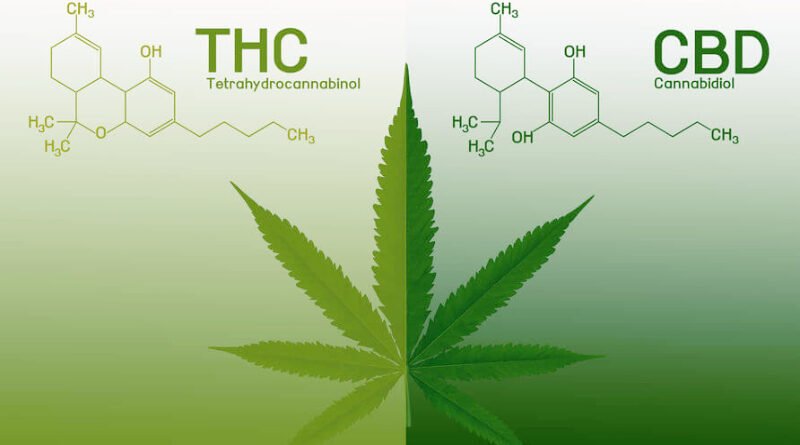CBD vs. THC: Understanding Their Impact on Health and How to Use Them Safely
Cannabidiol (CBD) and tetrahydrocannabinol (THC) are the two primary compounds found in the cannabis plant, each holding a distinct place in the realms of medicine and wellness. Over recent years, CBD and THC have surged in popularity, not just among enthusiasts but also within health and wellness communities globally. Their applications range from casual use for relaxation to formal medical prescriptions aimed at alleviating severe medical conditions. This article aims to delve into the core differences between CBD and THC, explore their impacts on health, and offer guidance on their safe and effective use. For more insightful articles on similar topics, visit https://hyperwolf.com/w/blog/.
Understanding CBD and THC
CBD Overview:
CBD is renowned for its non-psychoactive properties, meaning it does not cause the “high” typically associated with cannabis. Predominantly derived from the hemp plant, which contains higher concentrations of CBD and minimal THC, it has carved a niche in holistic medicine cabinets. In health and wellness, CBD is utilized for its potential to provide relief from conditions like chronic anxiety, inflammation, and sleep disturbances without significant side effects.
THC Overview:
In contrast, THC is the main psychoactive component of cannabis, responsible for the intoxicating effects. While its legal status varies dramatically across different regions, ranging from fully illegal to medically or recreationally legal, THC is primarily sourced from marijuana. Medicinally, THC is valued for its effectiveness in relieving pain, enhancing appetite, and reducing nausea, particularly in chemotherapy patients.
Comparative Analysis of Health Benefits
Benefits of CBD:
Research indicates that CBD interacts with the body’s endocannabinoid system, a complex network that helps maintain bodily homeostasis and regulates functions like mood, sleep, and immune response. Studies have shown promising results in using CBD to treat severe epileptic conditions such as Dravet and Lennox-Gastaut syndrome. Beyond epilepsy, consistent anecdotal evidence supports its use in managing chronic pain and reducing inflammation, making it a popular choice for a natural therapeutic approach.
Benefits of THC:
THC works by mimicking the effects of anandamide and 2-AG, natural compounds in the body that regulate pain, mood, and other functions. By binding to cannabinoid receptors in the brain, THC can alter pain perception and bring relief in conditions like multiple sclerosis and glaucoma. Moreover, the research underscores its benefit in appetite stimulation and nausea reduction, offering significant therapeutic value, particularly in patients undergoing intensive treatments like chemotherapy.This introductory segment of the article provides a foundational understanding of CBD and THC, setting the stage to explore further the potential risks, side effects, and guidelines for safe usage. As we continue, we’ll delve deeper into how to navigate the complex world of cannabinoids, ensuring that readers can make informed decisions about incorporating these compounds into their health regimen.
Potential Risks and Side Effects
CBD Risks:
While CBD is generally well-tolerated, it is not without potential side effects. Some individuals may experience fatigue, diarrhea, or changes in appetite and weight. Perhaps more critically, CBD can interact with other medications, such as blood thinners or seizure medications, by affecting the way the body metabolizes these drugs. Therefore, it’s essential for users to consult healthcare providers, especially if they are on other treatments, to ensure safe usage.
THC Risks:
THC’s side effects are more pronounced due to its psychoactive nature. Users may experience short-term memory impairment, altered senses, mood changes, and a distorted sense of time. Particularly for new or infrequent users, these effects can be unsettling. The long-term use of THC can lead to more significant issues, such as dependency or diminished mental function in chronic users. High doses are also linked to acute psychiatric reactions, particularly in individuals predisposed to mental illnesses like schizophrenia.
Safe Usage Guidelines
Guidelines for CBD:
Choosing high-quality CBD products is crucial for ensuring safety and effectiveness especially for growers looking for marijuana seeds online. Consumers should look for products with clear labels showing the amount of CBD and THC, a list of ingredients, and the type of CBD used. It’s vital to verify that the product has a Certificate of Analysis (COA) from a third-party laboratory, which confirms that the product meets safety standards and does not contain harmful levels of contaminants. Regarding consumption, beginners should start with low dosages—such as 5mg to 20mg per day—and gradually increase the dose based on their body’s response and therapeutic needs.
Guidelines for THC:
The legal landscape for THC varies by jurisdiction, so it’s important to understand local laws before purchasing and using THC products. Always opt for products from reputable, regulated suppliers to avoid the risks associated with contaminated or mislabeled cannabis. Start with a low dose, especially if new to THC or if the product is unfamiliar, and slowly increase the dose as needed to avoid overconsumption. For edible forms of THC, be aware that effects may take longer to manifest compared to inhalation, leading some to consume more than intended before the initial dose takes effect.Both CBD and THC offer significant health benefits, but like any active compounds, they come with risks that must be managed through educated cautious use. By understanding and adhering to these guidelines, users can safely explore the potential benefits of CBD and THC, enhancing their overall well-being while minimizing adverse effects.
Real-World Applications: Case Studies and Testimonials
Case Study 1: CBD for Chronic Pain
Marie, a 58-year-old retired nurse, suffered from chronic back pain for years. After trying various medications with little relief and significant side effects, she turned to CBD oil. Within a few weeks of daily use, she reported a noticeable reduction in pain and improved sleep. “CBD has given me my life back,” Marie says. “It’s not a cure, but it’s the only thing that has helped manage my pain without negative side effects.”
Case Study 2: THC for Cancer-Related Symptoms
John, a 45-year-old cancer patient, used THC edibles to help manage nausea and stimulate his appetite during chemotherapy. “THC helped me eat and keep food down when I was at my lowest,” John recalls. His oncologist monitored his use, which allowed him to maintain his weight and strength during treatment more effectively than traditional nausea medication.
Testimonials
Emma, 35: “Using CBD for anxiety has been a game changer. I feel calmer and can handle stress much better.”
Alex, 29: “THC has helped me with my insomnia tremendously. A small dose before bed improves my sleep quality without the grogginess I got from sleep meds.”
Conclusion
Throughout this article, we’ve explored the significant health impacts of CBD and THC, two of the most prominent compounds found in cannabis. While CBD is heralded for its therapeutic benefits without psychoactive effects—making it suitable for relief from pain, inflammation, and anxiety—THC is recognized for its efficacy in pain relief, appetite stimulation, and its potent psychoactive properties. Both compounds, however, come with potential risks and side effects, necessitating cautious and informed use.For a deeper understanding of cannabis regulation and its societal implications—which often serve as subtext in discussions about CBD and THC—the National Institute on Drug Abuse (NIDA) offers insights into the effects and legal status of cannabis. Similarly, the Centers for Disease Control and Prevention (CDC) provides comprehensive public health information that can contextualize the real-world backdrop against which these compounds are used.It is crucial for individuals interested in CBD or THC for health and wellness to conduct thorough research and consult with healthcare providers to tailor their use safely and effectively. By doing so, users can maximize benefits while minimizing risks.
Also visit Digital Global Times for more quality informative content.




